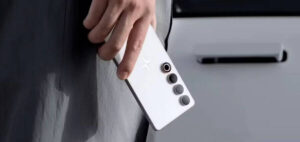An all-in-one location platform featuring geofencing, geocoding, and maps has been developed by American location intelligence company Radar. Radar’s SDKs and APIs are used by businesses like Panera, DICK’s Sporting Goods, T-Mobile, and Zillow to power location-based experiences on hundreds of millions of devices globally at a reasonable cost.
“Historically, ad tech and data monetization companies have dominated the location space. Our goal was to alter that. According to Nick Patrick, co-founder and CEO of Radar, “Since our founding in 2016, we’ve been dedicated to leading the industry in privacy, security, and compliance.”
Geofencing influences business results. For instance, it assisted businesses like Whataburger and DICK’s Sporting Goods in boosting app revenue, retention, and engagement.
However, geofencing on iOS and Android devices is not very extensive. For instance, accuracy on iOS is typically restricted to 100 meters, and you can only register 20 circular geofences at once. This makes internal geofencing development challenging. Additionally, it complicates the use of geofencing for more sophisticated use cases, such as order-ahead arrival detection or in-store app experiences.
This is where the Geofencing Platform from Radar is useful. With accuracy as low as five meters, support for an infinite number of geofences and polygon geofences, and customizable tracking options to optimize accuracy and battery efficiency, Radar’s geofencing platform enables developers to go beyond the limitations of iOS and Android.
Although it has led the geofencing market for a considerable amount of time, the company also introduced the Radar Maps Platform, a less expensive option to Mapbox and Google Maps Platform. It is the first time that full-stack geofencing and mapping are supported by a single location platform.
Radar is 50–90% less expensive than Mapbox and Google Maps Platform. Overall, it is assisting business clients in halving their map expenses. This facilitates those businesses’ investment in geofencing. Bojangles, for instance, funded a geofencing investment by switching to Radar and cutting their Google Maps bill by 60%.
The Radar SDK does not automatically gather personally identifiable information such as name or email; rather, it only gathers location data if end users grant permissions.
Customers can reduce the amount of data they collect by using the platform to only gather and save location data that is necessary for their use case, such as travel apps that detect airport visits, shopping apps that gather store visits, and so forth.
Two significant developments are probably going to happen in the same way:
First, businesses will require tools like Radar to gather, process, and analyze location data, as both its volume and accuracy will only rise.
Second, businesses will face increasing demands to operate more efficiently. This means that for location tracking and navigation, businesses will need to select scalable, reasonably priced solutions like Radar.
Radar intends to expand its lead in location infrastructure and enhance its product capabilities. This entails increasing spending on location intelligence, geofencing, and maps. Additionally, it intends to enter new verticals. Verticals like gaming, travel, and logistics will also be given priority in the upcoming years, despite the fact that it has historically been concentrated on industries like retail and restaurants.
Read More: Click Here


